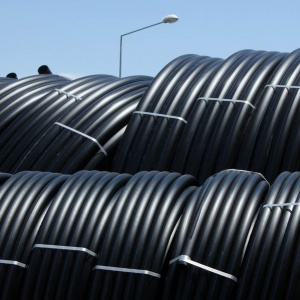
Muna Noor Manufacturing & Trading LLC is a pioneer in the manufacture of plastic pipe systems in Oman. Polyethylene has grown to become one of the world’s most widely used and recognized thermoplastic piping materials. Today’s modern polyethylene resins are highly engineered for rigorous applications within a wide range of applications where a tough, ductile material is required to assure long-term performance.
Polyethylene pipes provide a cost-effective solution for a wide range of piping applications including pressure rated, above-ground, buried, trenchless, pipe-lining, floating and submarine installations. Thus, ensuring the material can be used for a wide range of applications such as water supply, drainage and sewerage, gas distribution, industrial piping for slurry and abrasive materials, liner for petroleum flow lines, electrical and telecommunication cable ducting.
One of the major factors that contribute to the growth of polyethylene as a piping material is the cost savings in installation. Polyethylene pipe is a tough and durable system whilst retaining its flexibility and leak proof characteristics thus ensuring lower maintenance costs and increased service life as compared to traditional piping materials.
Reliability: In 1989, Loma Prieta Earthquake, Santa Cruz, California USA, 30 primary distribution pipelines failed and further exposed the hazards of steel pipe in earthquakes. Many pipes failed due to movements and corrosive loss of joint integrity. The HDPE networks suffered no reported failures.
Exactly the same scenario was reported in a large earthquake in Christchurch, New Zealand, where yet again the HDPE pipe network survived the earthquake when all other pipe materials failed.
Integrity: During the 1995 Kobe Earthquake in Japan, the HDPE water networks were the only pipe networks that survived with less than 0.002% loss of network integrity. In contrast, over 78% of the rigid pipeline sections failed causing widespread drinking water and pressure loss for firefighters trying to
cope with over 300 fires caused by broken gas lines across the city. Osaka Gas found failures in their steel and iron systems and none at all where HDPE pipe was utilized.
Advantages of Polyethylene Pipe
| Light weight |
| High impact resistance |
| Flexible |
| Corrosion Resistance |
| Self-restrained joints |
| Leak proof system |
| Low installation costs |
| Negligible maintenance cost |
| Long-term service life |
Product Classification: PE material for pipe manufacture is classified according to the minimum hoop stress required for a service life of 50 years. This minimum hoop stress is termed as Minimum Required Strength (MRS). Thus PE pipes with strength classification PE 100 has minimum required strength of 10MPa respectively for 50 years. The following table gives the range of pipes and various standards to which they are manufactured at a glance:
| Material | Applications | Standards |
|---|---|---|
| HDPE | Potable Water Supply | ISO 4427-2, EN 12201-2, DIN 8074 |
| HDPE | Irrigation, Drainage and sewerage, general purpose | ISO 4427-2, EN 12201-2 |
| HDPE | Fire water mains | ISO 4427-2 (FM certified to FM 1613) |
| HDPE | Cable Conduit | ISO 4427-2 / BS EN 61386-24, NEMA TC7 |
| HDPE | Gaseous fuel supply | EN 1555-2, ISO 4437-2 |
| HDPE | Liner pipe | API 15 LE, SP2094, DEP 31.40.30.34-Gen DEP 31.40.20.30-Gen, and other GCC / International standards |
Polyethylene pipe has a number of applications as outlined below, please contact our team for further details:


